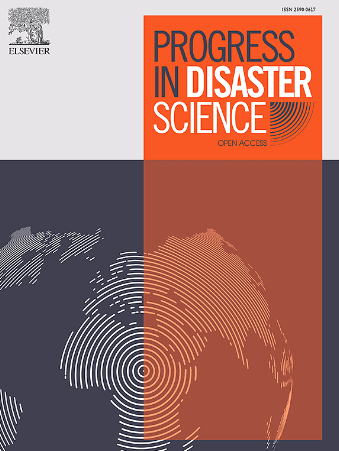Earthquake loss estimation due to damage to residential masonry buildings during scenario earthquakes in Nepal
IF 3.8
Q3 ENVIRONMENTAL SCIENCES
引用次数: 0
Abstract
Historical records indicate that large-magnitude earthquakes have frequently impacted Nepal, leading to widespread destruction and significant loss of life. This study quantifies potential earthquake losses for residential masonry structures by analyzing damage data from the 2015 Gorkha earthquake across 31 affected districts. The residential buildings in the study area are categorized into seven typologies based on construction materials and the number of stories. Damage states were classified into five grades using the European Macroseismic Scale (EMS-98). Based on these classifications, empirical fragility curves were developed. These curves, integrated with exposure, consequence, vulnerability, and fault rupture models, served as the foundation for a loss estimation analysis. We examined three distinct earthquake scenarios– two historical and one hypothetical - that are representative of seismic activity in central, eastern, and western Nepal. Although post-2015 Gorkha earthquake reconstruction efforts resulted in approximately 1,000,000 seismically compliant residential buildings, an estimated 814,690 pre-existing masonry buildings remain highly vulnerable due to their noncompliance with seismic provisions. This study provides municipality-level economic loss estimations, as well as damage distributions for residential masonry buildings, for three scenarios, marking the first time this has been done in the study area.
尼泊尔模拟地震中住宅砌体建筑损坏的地震损失估算
历史记载表明,尼泊尔频繁发生大地震,造成大范围破坏和重大人员伤亡。本研究通过分析2015年廓尔喀地震31个受灾地区的破坏数据,量化了住宅砌体结构的潜在地震损失。研究区域内的住宅建筑根据建筑材料和层高划分为七种类型。使用欧洲大地震震级(EMS-98)将地震破坏状态分为五个等级。在此基础上,建立了经验脆弱性曲线。这些曲线与暴露、后果、脆弱性和断层破裂模型相结合,成为损失估计分析的基础。我们研究了三种不同的地震情景——两种是历史的,一种是假设的——它们代表了尼泊尔中部、东部和西部的地震活动。尽管2015年后的廓尔喀地震重建工作产生了大约100万栋符合地震要求的住宅建筑,但估计有814,690栋原有的砖石建筑仍然非常脆弱,因为它们不符合地震规定。本研究提供了市政一级的经济损失估计,以及住宅砌体建筑在三种情况下的损害分布,这是第一次在研究区域进行这样的研究。
本文章由计算机程序翻译,如有差异,请以英文原文为准。
求助全文
约1分钟内获得全文
求助全文
来源期刊

Progress in Disaster Science
Social Sciences-Safety Research
CiteScore
14.60
自引率
3.20%
发文量
51
审稿时长
12 weeks
期刊介绍:
Progress in Disaster Science is a Gold Open Access journal focusing on integrating research and policy in disaster research, and publishes original research papers and invited viewpoint articles on disaster risk reduction; response; emergency management and recovery.
A key part of the Journal's Publication output will see key experts invited to assess and comment on the current trends in disaster research, as well as highlight key papers.
 求助内容:
求助内容: 应助结果提醒方式:
应助结果提醒方式:


